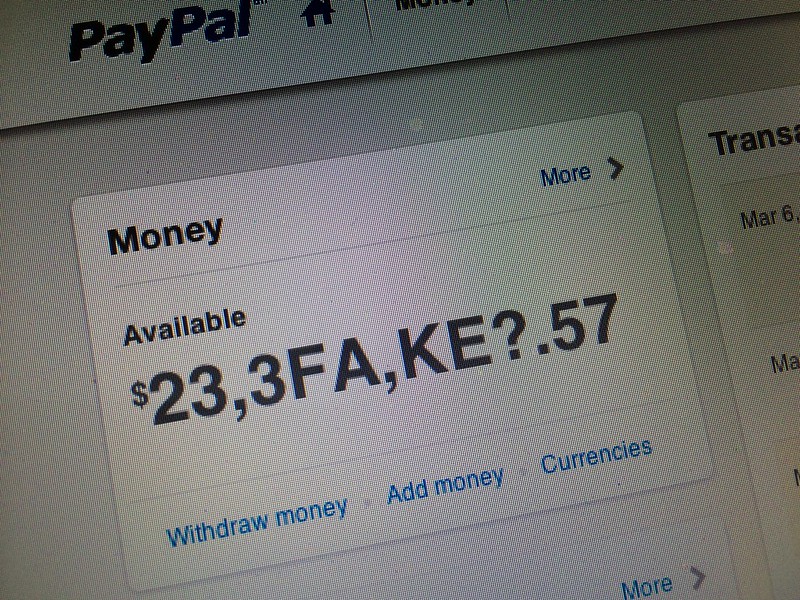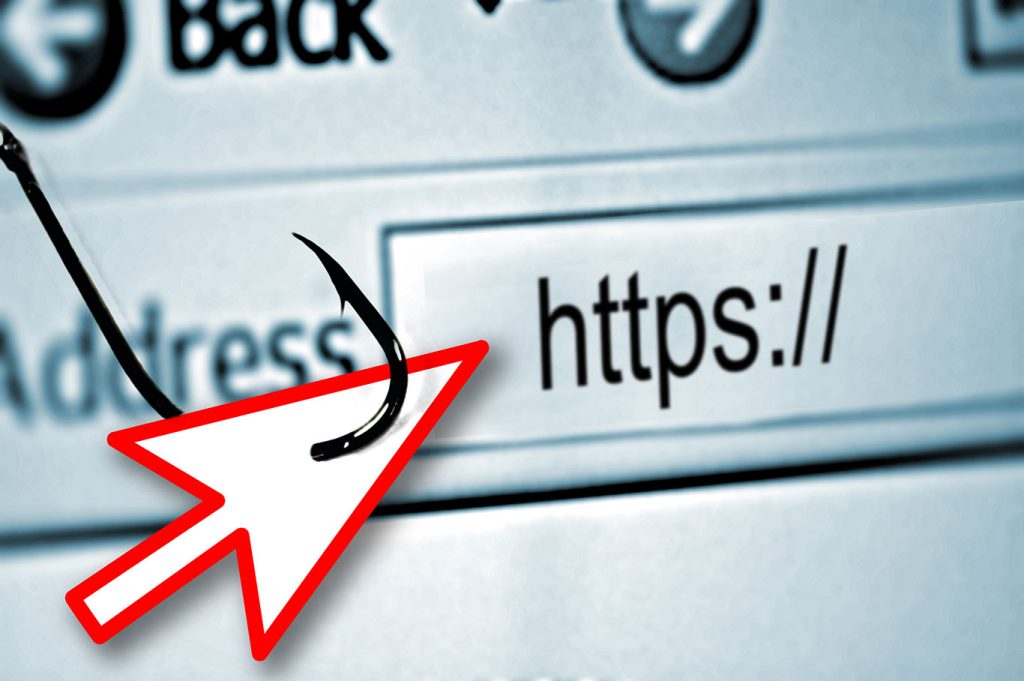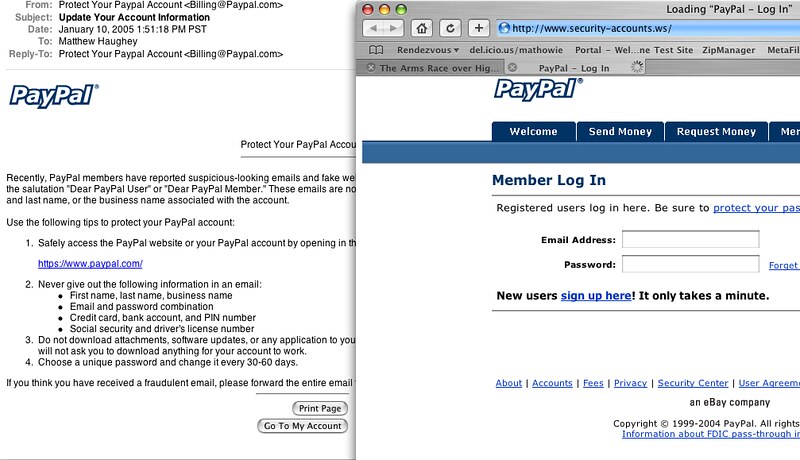Spam, phishing, and other forms of fraud on the PayPal platform are the most typical ways in which PayPal users are defrauded of their money on the site. In the world of e-commerce, PayPal has become an almost ubiquitous means of payment. Clients appreciate being able to make payments with a single login rather than having to input their credit card information, expiration date, security code, and billing address each time they make a payment. Given the high demand for PayPal and the ease with which the service may be integrated into an existing checkout page, most e-commerce companies now include PayPal as a payment option on their website’s checkout page.
Despite its many advantages, PayPal nevertheless has one thing in common with traditional credit card payments: it is a victim of identity theft. PayPal, like any other payment processor, is subjected to a never-ending barrage of frauds and fraud activities aimed at siphoning money from the pockets of innocent people. Discuss the most frequent PayPal scams and how e-commerce merchants may prevent themselves from being victims of these schemes.

Discover The Many Types of Paypal Scams
Paypal shipping address scam
After a purchase has been completed and the payment has been deposited into the seller’s PayPal account, the scammer contacts the seller and requests that the item be shipped to an incorrect delivery address. Once the shipping business has attempted multiple unsuccessful delivery efforts, the item is marked undeliverable in their system. After that, the scammer contacts the shipping business and provides them with a new, legitimate shipping address. Following receipt of their cargo, the fraudster files a complaint with PayPal stating that the item was never delivered as promised. There is no confirmation of delivery in possession of the seller because their transaction summary contains just the initial, incorrect address. To avoid falling victim to these scams, double-check that the shipping address is valid before sending the item, and consult with your shipping firm about ensuring that consumers cannot reroute purchases.
Overpayment scams using PayPal
A scammer may make a payment to a seller’s PayPal account that is greater than the amount of money they intend to spend on the item they are purchasing. Afterward, they will contact the seller to inform them that they have overpaid and to request that the remaining sum be returned to them. Following the seller’s return of the overpayment amount, the fraudster files a complaint with PayPal, alleging that their account has been compromised and that they never intended to make a payment to the seller in the first place, according to the scammer. Regardless of whether the fraudster has shipped out the purchased goods or not, PayPal reimburses them for the entire amount of the initial payment.
The seller will still lose the “overpaid” sum that was transferred back to PayPal by the scammer. Fortunately, it is simple to prevent falling victim to this scam. Customers can pay through PayPal, but one alternative is to simply refuse to take any direct payments through PayPal and instead insist that they use the checkout system. Even if you do not wish to accept direct payments, you may still avoid falling victim to this scam by refunding the whole purchase and requesting a fresh payment for the correct amount of the original transaction.

PayPal fake email scams
In certain cases, scammers will send merchants fraudulent emails that appear to be from PayPal, in which they claim that the scammer has paid money into the seller’s account and that PayPal has placed a hold on the funds and will not release them until the seller sends a tracking number for the shipment. Payment processor PayPal does not hold any of your funds in this manner. The scammer is expecting that the seller will rush to ship the goods and provide a tracking number so that the money may be collected from the victim’s account. Once the item has been dispatched, it is too late to reverse the situation: the fraudster will receive an item for which they never paid, and the seller will soon discover that PayPal never held any funds for them. Because many vendors obtain client information from these emails and ship the item out as soon as possible, a bogus email could result in legitimate product shipping in some cases. Because this scam does not pass through PayPal’s systems at all, there is nothing that the company can do to safeguard sellers from being targeted.
PayPal phishing scams
Phishing scams that target PayPal vendors are also a possibility. The seller may receive an email that looks to be from PayPal informing them that cash has been put into their account pending confirmation, along with a link or button that they must click in order for the money to become available to them. The link takes the user to a spoof PayPal site, which will prompt the seller to enter their login information. After entering their email address and password into the bogus website, the fraudster will be able to connect to the seller’s legitimate PayPal account, from which they will be able to make payments and withdraw monies. Traditional phishing schemes, in which millions of dollars are promised in exchange for a minimal expenditure of time and money, have existed almost as long as email itself. These crooks are now concentrating their efforts on PayPal consumers.
For a little charge or documentation fee, these con artists promise large financial rewards in the form of lost inheritances or other uncovered funds in exchange for a small amount of money upfront. It’s likely that they have no intention of delivering you any money and that they will simply walk away with the lower amount you sent. Every year, millions of individuals fall prey to this scam, despite the fact that it has become rather well-known in recent years. Phishing scams, as well as other types of false email frauds, can be avoided by following these simple cybersecurity guidelines: always check the real email address that was used to send the message, not simply the display name, avoid clicking any links or downloading any attachments if you receive an email that appears strange or suspicious. Never submit personal information to a webpage that has been linked to you, such as a credit card number or password, without first getting permission. If you need to log into a website, you should navigate to the home page and log in from there.

Hacked PayPal scams
When a scammer successfully hacks into someone else’s PayPal account (typically through the use of a phishing scam), they are able to make purchases and send payments using the money from the account that they have taken over as their own. An online seller may receive notification of purchase and send an item, only to later receive notification from PayPal that the transaction was fraudulent and that the transaction must be reversed. If a transaction is approved for PayPal’s Seller Protection Program, merchants can be reimbursed for their losses in these instances. To protect themselves from purchases made with stolen accounts, merchants who accept payments through PayPal should be certain that they are complying with all of the rules of the Seller Protection Program.
Fake PayPal accounts
Some PayPal scams involve creating a new account and pretending that the account belongs to someone else, which is known as impersonation. Fake charities, while not limited to PayPal, are a prevalent type of scam, especially following disasters that are extensively publicized. Scammers set up a PayPal account as well as one or more social media accounts under the guise of a charitable organization dedicated to assisting those who had been affected by the calamity. They then utilize sponsored advertising or bot accounts to promote posts from the fictitious charity account, asking people to make donations to the legitimate charity account.
The most difficult aspect of this fraud is that the majority of victims are unaware that they have been duped, believing that their money has been donated to a worthy cause when in fact, it has been funneled into the pockets of scammers. As an alternative to creating a phony storefront in the name of a legitimate business, someone may instruct buyers that their funds should be deposited into a PayPal account. While rarely common, this type of fraud can be particularly damaging to the shop whose name was exploited, as it leaves them with a large number of unsatisfied consumers with whom they had nothing to do in any case.
Lost money to online fraud? We will recover your funds !
How To Spot and Avoid Common Paypal Scams
Paypal scams have been around since the platform’s inception, but these scams increased during the pandemic. Perhaps because of the high number of remote workers and transactions that had to be done on Paypal because of lockdown restrictions. Last year there was a new wave of Paypal scams, this time sending emails to your inbox claiming to need a verification of your password because of “strange activity” going on in your account.
Signs of a Paypal scam email
You will find odd characters or random numbers in the sender’s email. Another sign is the use of “Dear Customer” as an opening. The message always carries an urgent tone to force you to act quickly. The scammers know that the fear that someone has hacked your account and can make illegal withdrawals will get you to react blindly without thinking. So before clicking on any link they send, first calm down. Then hover over the link the scammer sends you will realize it is not the Paypal official website.
Common examples of PayPal scammer emails
The Prize winner scam: Here, the scammer will email you, congratulating you on winning a prize. Here is the catch, you have to pay a processing/handling fee to claim the “prize.” If you don’t remember entering the competition or doing anything that warrants a reward, know that you are dealing with scammers. Keep in mind that a legitimate company will not ask you to pay before receiving a prize/reward.
You’ve been paid scam: Scammers target e-commerce stores and business owners in this type of scam. For example, if you’re selling an item, a scam email can tell you that you’ve received the payment. Whereas, in fact, the scammer just wants what you’re selling for free. If you receive a notification for payment, double-check your Paypal account balance before shipping the item.

Tell a genuine Paypal email from fake ones
If there is a problem with your account, Paypal will send you an email, and you will receive a notification on your dashboard. So before you click on anything, make sure you have received a notice that bears the same message like the one in the email. Paypal addresses its customers by their name and not “Dear Customer.” So don’t reply or open any attachments; it could be a virus. And if in doubt, contact PayPal to be 100% sure.
Report Your PayPal Scam Today!
There are no words to describe the devastation victims of Paypal scams experience when they realize that they have been duped. It is not uncommon to see fraud victims recoil and become a paler version of themselves. First, it is the sadness and despair of losing their hard-earned funds. After that, the shame and disappointment( always directed at themselves) slowly creep in. Unfortunately, most victims will keep the incident because they feel it is their fault for being fooled the second time. We don’t blame them, and we are here to help.
If you receive an email saying there is a problem with your online account, log in to your PayPal account to verify. Ignoring email creates urgency by saying that your account will be blocked/shut down if you do not verify and update your password. Don’t click on any links or attachments from unknown sources. Do not send replies to such emails. Turn on your spam filters so emails with unknown addresses will be sent straight to your spam folder. Add the email addresses of any suspicious emails to your block sender lists. You won’t then get an email from that address again.



